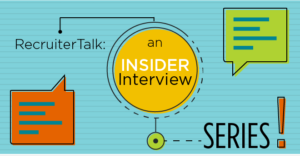Employer brand describes an organization’s reputation as an employer and serves to drive candidate interest in working with your company. Because it touches so many aspects of the candidate lifecycle, there is much debate as to what actually drives ROI for a company’s employer branding efforts.
I asked top talent acquisition professionals, What employer branding initiatives actually don’t move the needle? Or what misconceptions do most organizations have about how to improve their employer brands?
Here’s the misinformation that really gets under our experts’ skin:
1. Employer Brand Comes from a Boardroom
“One of the biggest mistakes organizations make when building their employer brand strategy is to not include qualitative workforce insight. The most effective, authentic employer brands are discovered only after conducting thorough, unbiased research to truly understand what is in the hearts and minds of their best-fit employees. To think an employer brand comes from your boardroom and not your people is a huge misconception.”
–Shannon Smedstad, Principal Employer Brand Strategist, Exaqueo
2. Building an Employer Brand Is a Quick and Dirty One-time Effort
“So, it really depends how you define ‘moving the needle’ because where most people get employer brand wrong is that they try to put it all into one big lump, and it’s not. There is a large project in developing an accurate version of your story, but there are also a lot of micro initiatives that go into any kind of implementation or improvement.
That’s probably the biggest misconception people have about their employer brand. They believe that large-scale projects will create large-scale improvements, but the reality is that it takes time and iteration. It should be treated like a living breathing thing, not some project to take on and pass off.”
–Katrina Kibben, Employer Brand Copy Lead, Randstad Sourceright
3. Employer Brand and Employer Value Proposition Are Equal
“Something that drives me crazy – the belief that an employer brand is the same thing as an EVP (employer value proposition).
I guess a misconception, in my opinion, is that an employer brand can be built on entirely aspirational footing and stand a chance of being effective or impactful without a clear strategy for affecting change and acknowledging reality.”
–Bryan Adams, CEO Founder, Ph.Creative, an Employer Branding & Talent Attraction Agency Company.
4. You CAN’T Measure Employer Brand
“What doesn’t move the needle? Focusing on the short term and not taking action because it’s too hard to measure. Random or occasional content and a few more positive reviews on Glassdoor isn’t going to do the trick. You need to make a long-term investment. Your company’s reputation with your employees and the talent you wish to attract is at stake. It’s a fact that an improved employer brand will have a positive impact on hiring and retention, and you can measure it if you try. But you have to try.”
–Kristin (Volpe) Thomas, Director of Employer Engagement, FlexJobs & Remote.co
5. Employer Brand is for Sale
“I think there is a myth that exists that companies can simply buy themselves a better employer brand. Companies can’t improve their employer brand (EB) without actually making some 21st century updates to the way they deal with their people. I have witnessed this first-hand where a large company starts investing hundreds of thousands in EB, yet when you interview their current staff, it’s business as usual.”
–Chuck Solomon Co-Founder & Recruitment Marketing & Employer Branding Strategist, Line Hire
6. Sporadic Social Posts are All You Need to Build Brand
Sharing a post or tweet on social media once a week does not make an employer brand. Not only does it share very little about your employees and their experiences; it tells potential candidates that you are not invested in sharing how valuable your employees are and that the potential candidates aren’t worth the commitment and time it takes to share your employees’ stories.”
–Emilie (Shegos) Mecklenborg, Social Media Manager / Employer Branding, Recruitment Marketing and EVP Strategy Company of Talent Collective
7. A Lasting Employer Brand Looks Like One Awesome Campaign
“Most organizations assume that employer brands are most improved by tactical execution– a cool new hashtag campaign or video content. Those can be great tactics, but brands are most improved when there’s an actual strategy behind them, including brand foundation, pillars, voice, identity. This way when you go to execute, you can ensure it’s aligned and will actually work. Flash in the pan creative is fun but rarely drives lasting results.”
–Susan S. LaMotte, CEO, exaqueo.com, an employer brand experience firm.
8. If You Build Employer Brand, They Will Use It
“Developing an authentic EVP isn’t enough. To move the needle organizations must evangelize the employer brand internally, taking the time to teach recruiting teams how to use the EVP to connect with candidates. The biggest mistake I’ve seen is handing TA (talent acquisition) a playbook and expecting them to know what to do with it. The most successful organizations I’ve been part of use storytelling to demonstrate and celebrate their EVP.
Another mistake I see a lot is leaning too heavily on your mission, vision, and values. At their core, these elements are often your organization’s expectations of your employees. Candidates want to know what’s it it for them; don’t forget to fill that gap. Think of your EVP as an employment pact that differentiates you from your competitors.”
–Charlotte Marshall, Vice President, Digital/Social Media & Employer Brand, at Magellan Health
We hope these soundbites help you better prioritize your resource allocation to grow your own employer brand. If you disagree with any of these opinions, or have any employer branding myths to add to the list – tweet @MightyRecruiter.
 MightyRecruiter
MightyRecruiter




Leave a Reply